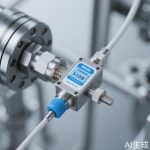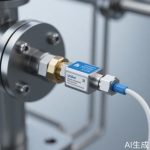In the rapidly evolving landscape of technology, pressure sensors have become indispensable components across a myriad of industries, from healthcare and automotive to aerospace and consumer electronics. At the heart of their functionality lies a crucial attribute: sensitivity. Pressure sensor sensitivity refers to the device’s ability to detect and respond to minute changes in pressure, a characteristic that can make or break the performance of an entire system. As demands for accuracy and reliability escalate, understanding and optimizing sensitivity has never been more vital.
Sensitivity is typically measured as the change in output signal per unit change in pressure, often expressed in millivolts per volt per kilopascal (mV/V/kPa) or similar units. A highly sensitive sensor can discern even the slightest pressure variations, enabling precise control and monitoring in critical applications. For instance, in medical devices such as ventilators or blood pressure monitors, high sensitivity ensures patient safety by providing real-time, accurate data. Similarly, in automotive systems, sensitive pressure sensors contribute to enhanced fuel efficiency and emission control by fine-tuning engine performance based on minute pressure changes in intake manifolds or exhaust systems.
The importance of sensitivity extends beyond mere functionality; it directly impacts the efficiency and longevity of systems. In industrial automation, for example, pressure sensors with high sensitivity allow for meticulous control of hydraulic and pneumatic systems, reducing energy consumption and minimizing wear and tear on machinery. This not only boosts productivity but also lowers maintenance costs, offering a significant return on investment. Moreover, in environmental monitoring, sensitive sensors can detect subtle pressure changes indicative of weather patterns or pollution levels, aiding in timely decision-making and resource management.
However, achieving optimal sensitivity is not without challenges. Factors such as temperature fluctuations, mechanical stress, and electrical noise can adversely affect a sensor’s performance. Manufacturers must employ advanced materials and innovative designs to mitigate these issues. Techniques like using semiconductor-based piezoresistive elements or capacitive sensing mechanisms have proven effective in enhancing sensitivity while maintaining stability. Additionally, calibration and signal conditioning play pivotal roles in ensuring that the sensor’s output remains accurate and reliable under varying conditions.
Looking ahead, the future of pressure sensor sensitivity is poised for remarkable advancements. Emerging technologies such as MEMS (Micro-Electro-Mechanical Systems) and nanotechnology are pushing the boundaries of what’s possible, enabling the development of sensors with unprecedented sensitivity and miniaturization. These innovations promise to revolutionize fields like wearable health tech, where sensors must be both highly sensitive and compact to monitor vital signs unobtrusively. Furthermore, the integration of artificial intelligence and machine learning algorithms can help in dynamically adjusting sensitivity based on real-time data, paving the way for smarter, more adaptive systems.
In conclusion, pressure sensor sensitivity is a cornerstone of modern technological progress, influencing everything from everyday gadgets to life-saving equipment. As industries continue to strive for greater precision and efficiency, the focus on enhancing sensitivity will undoubtedly intensify. By embracing cutting-edge research and development, we can unlock new possibilities and drive innovation forward, ensuring that these tiny yet powerful components continue to shape our world in profound ways.




Leave a Message